10+ ways to visualize your martech stack

Table of Contents

This is the 8th 12 months we’re running The Stackies. It is an awards plan that invites entrepreneurs to share a one slide illustrating their martech stack — the various applications and platforms they use and how they conceptualize them functioning with each other.
I’d really encourage you to participate (deadline for entries April 29). It is a amazing way to lead to our community’s being familiar with of how martech matches into the operate and movement of modern-day promoting.
Having said that, even if you under no circumstances share your stack outside the partitions of your business, illustrating it can be an unbelievably valuable exercising to greater fully grasp it — and be in a position to clarify it to other stakeholders.
So what’s the most effective way to illustrate your stack?
Turns out there are quite a few means, just about every bringing a distinctive lens. Getting reviewed hundreds of entries to The Stackies over the yrs — here are all of them from 2015, 2016, 2017, 2018, 2019, 2020, and 2021 — I have distilled 10 designs that I have observed on their personal and in mixture jointly.
1. Vendor Classification Map
Generally utilizing the taxonomy from our advertising and marketing technological innovation landscape, martech apps are structured into their product or service classes and subcategories. It reveals your stack as a result of the lens of a vendor market map and identifies the items you’ve selected. This is a great way to take a look at your over-all stack stock and exhibit the span of martech remedies.
Here’s an instance from SAS and their 2021 Stackie entry:
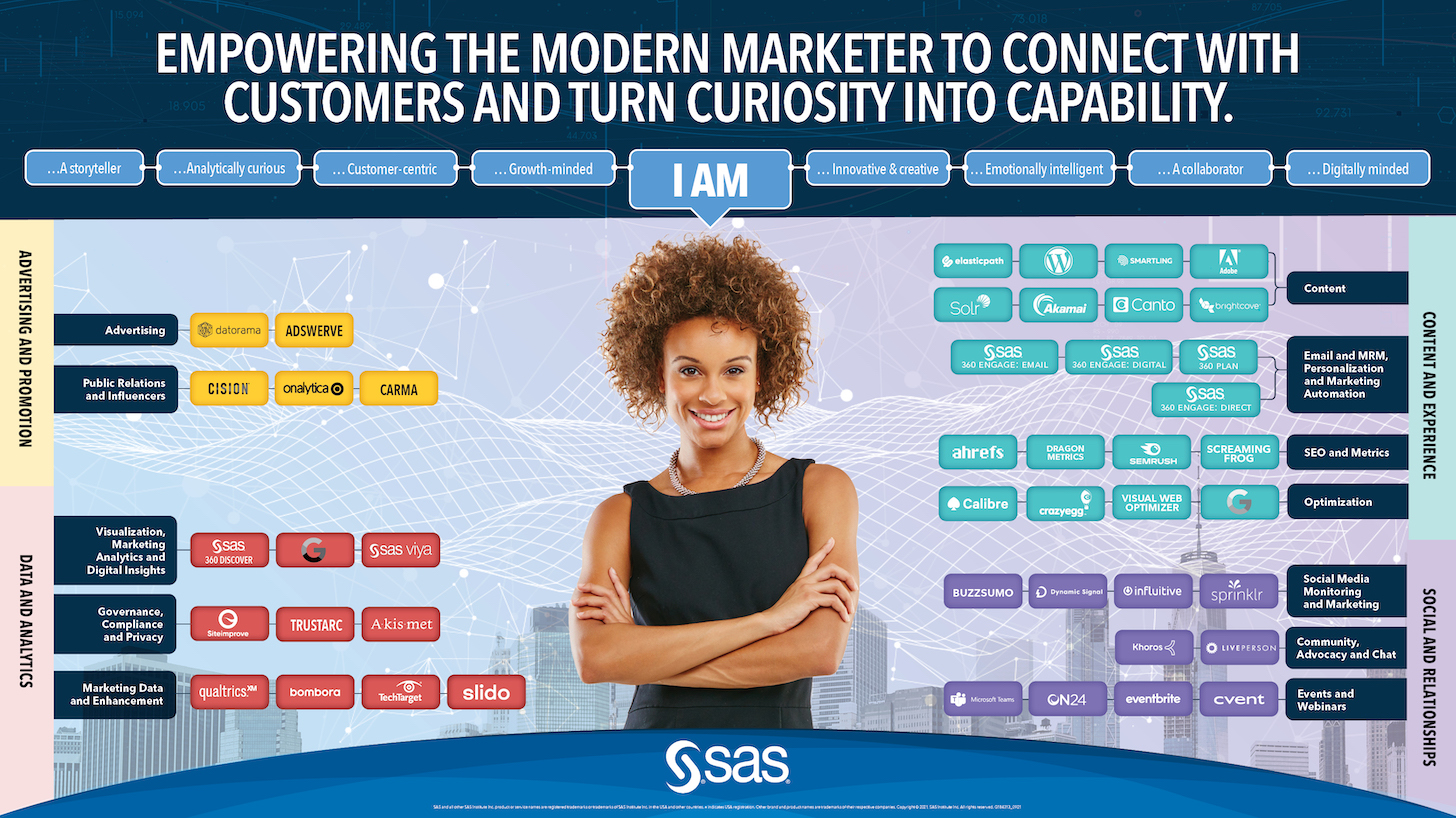
2. Client Journey Map
Yet another prevalent design is to align your martech stack versus diverse phase of the customer’s journey. Usually for entries to The Stackies, the journey is simplified into 4-5 stages, this kind of as Uncover, Contemplate, Obtain, Onboard, and Mature.
This wonderful example from Juniper Networks and their 2021 Stackie entry illustrates two proportions: the customer journey horizontally and the vendor classes used vertically:
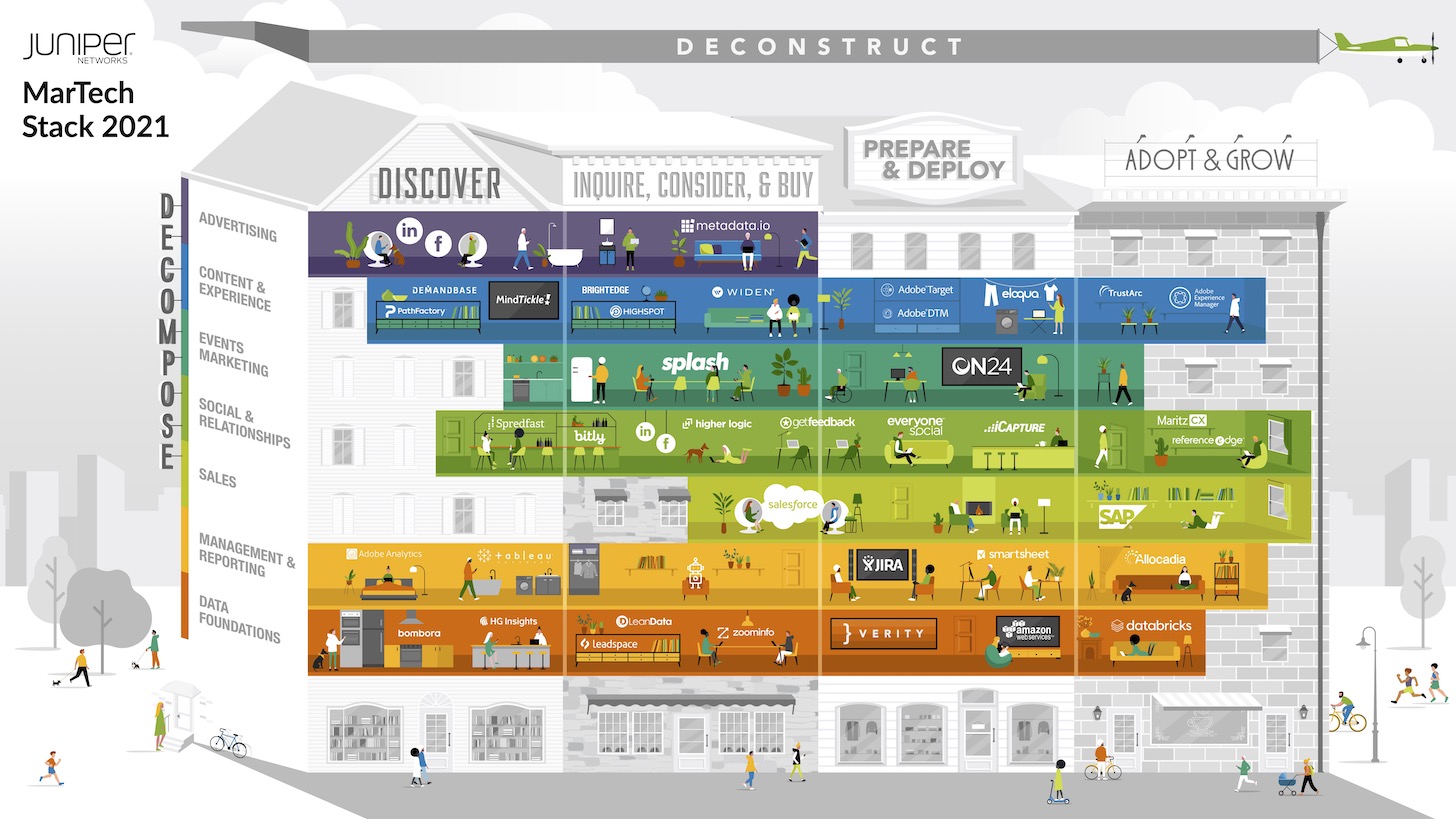
3. Back again-Phase vs. Front-Phase
One more way of seeking at your stack is by means of a theater metaphor: back again-phase and front-phase apps and platforms. Entrance-phase apps specifically touch the shopper — e.g., world-wide-web experiences, electronic mail campaigns, social media engagement tools, advertising, and so on. Back-stage apps are made use of to provide inner stakeholders, such as analytics, arranging, asset administration, productivity, and so forth.
This is an tasteful case in point from Crimson Wing Shoes and their 2017 Stackie entry, with again-stage to entrance-stage categorization together the vertical accessibility and client journey stage alongside the horizontal axis:

4. Function or Part-Dependent Map
When martech stacks can be rather significant, any one individual in the marketing department is not likely to have to learn all of the applications in just it. Distinctive roles inside of promoting will use diverse tools. So one more beneficial way of mapping your martech stack is to group applications by the roles or capabilities that use them. This is reveals the “who” dimension of your stack, which is beneficial to see the interrelation among applications, capabilities, and outcomes.
This instance from Bigtincan’s 2019 Stackie entry illustrates three most important roles: world wide web management, advertising and marketing automation, and content material advertising:
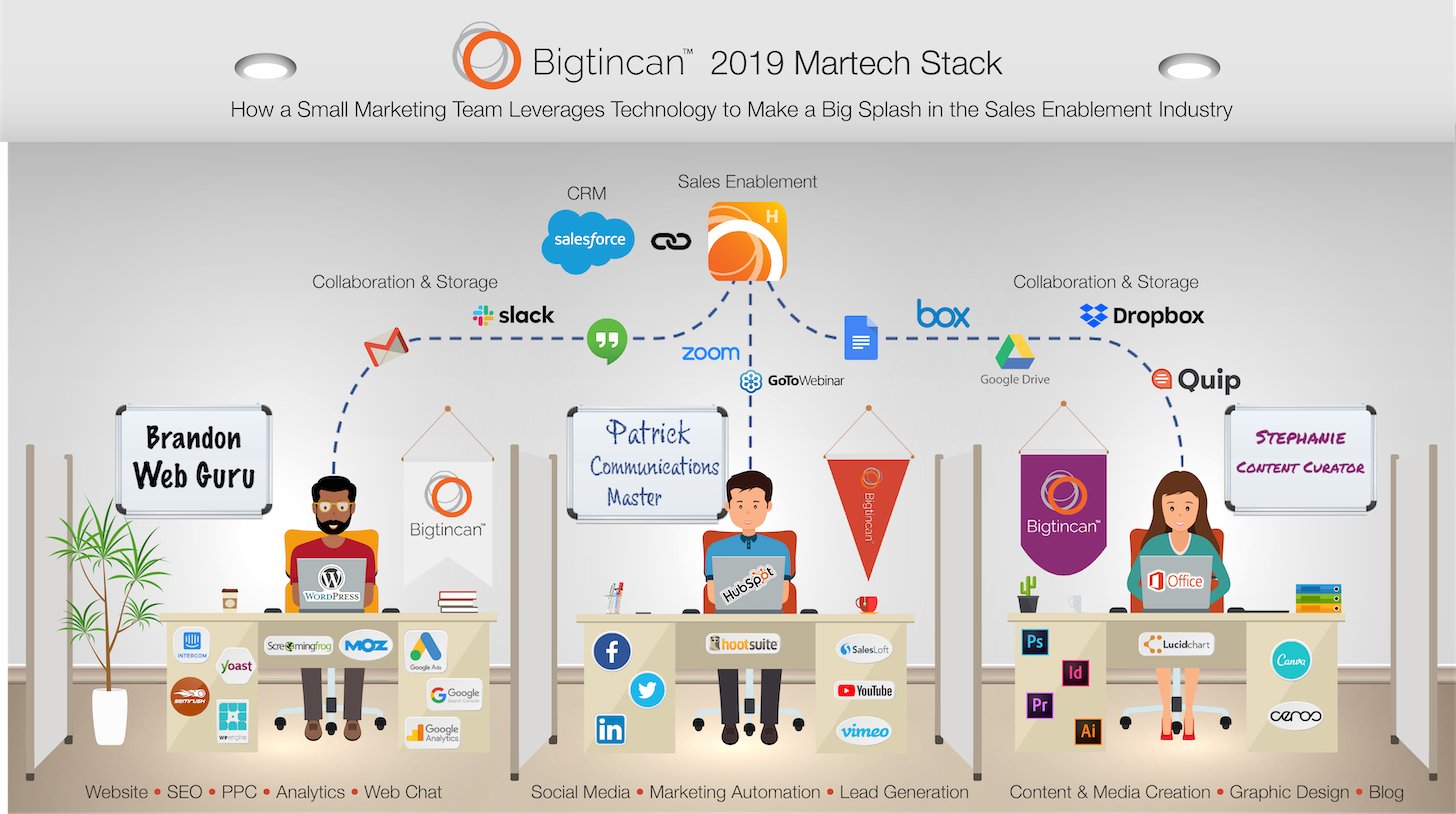
5. Point Solution/System Ecosystem Map
Integration is critical to an powerful martech stack. Another excellent way to visually assess your stack is to display the platform(s) that are the gravitational middle(s) of your martech stack and which specialist apps integrate to every single of them. It is an ecosystem watch of your stack.
This illustration from Poly’s 2020 Stackie entry actually captures 5 different dimensions, like relative financial commitment, paid/gained/owned options, vendor class — and identifies platforms, built-in expert apps, and stand-by itself level methods:

6. Utilization Map (Relative Time in Tools)
Some martech apps are applied consistently, as an integral element of marketing’s day-to-working day functions. Other apps, on the other hand, are additional specialised and made use of considerably less regularly. This doesn’t indicate they are not useful. They just have a time and area for their intent. Determining closely-made use of key applications vs. frivolously-made use of tools specialists can be a further insightful way to fully grasp the composition of your stack.
This example from Airstream’s 2019 Stackie entry cluster applications generally by their use scenario — planning, innovative, engagement, dealer channel, and measurement — but the top of the pine tree icons signifies the relative time entrepreneurs devote interacting with each individual tool:
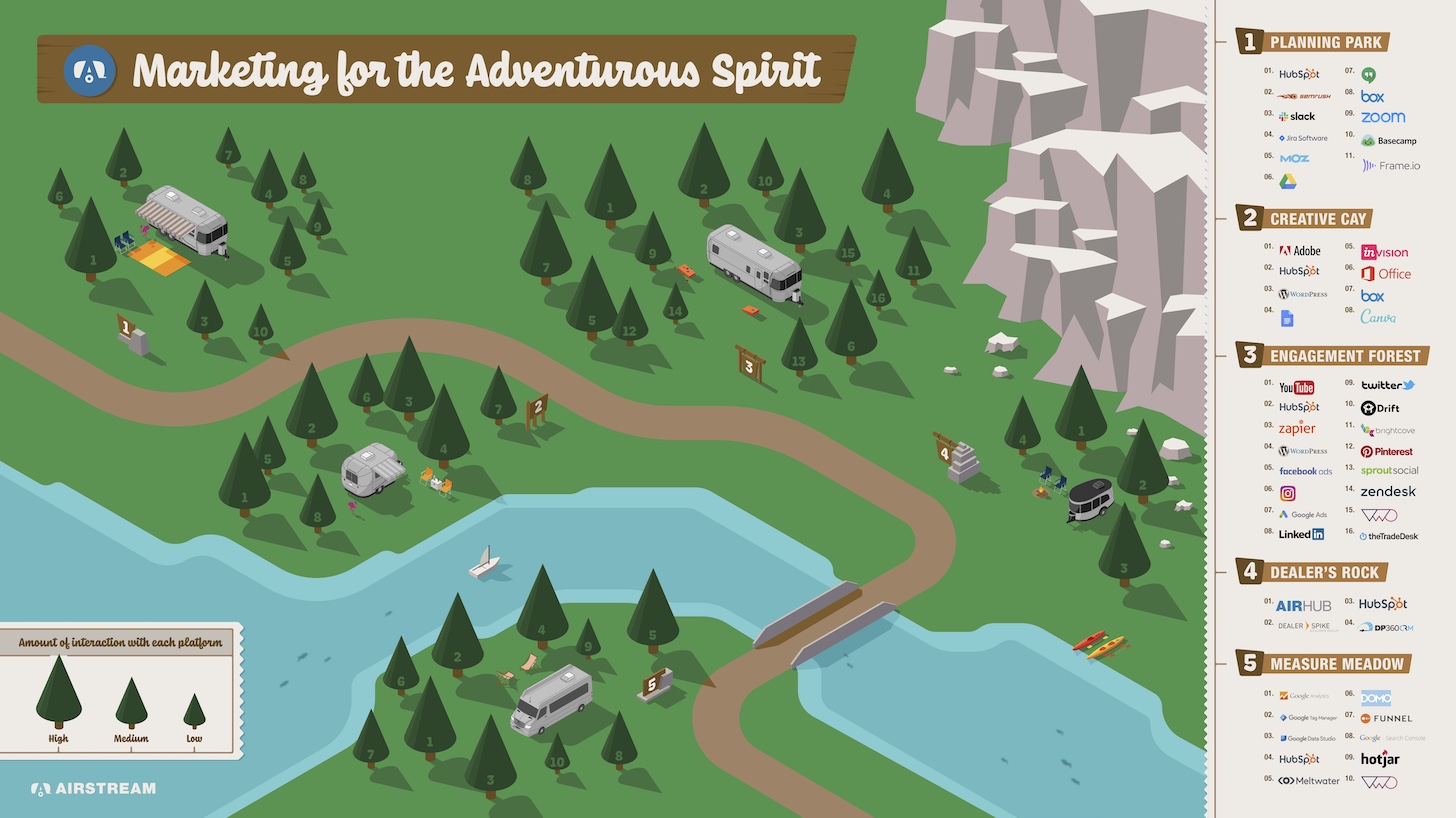
7. Relative Diploma of Automation
Even though looking at the amount of time that people spend engaged with various tools in your stack, it’s an attention-grabbing lens to analyze how automated all those instruments are. Which equipment are utilized mainly manually? Which types have substantial automations? This watch can be practical each to have an understanding of the marriage concerning applications and promoting course of action and operations. It can also assistance determine alternatives to automate.
Automation is the major frontier in Large Ops in my feeling.
This illustration from Paychex’s 2019 Stackie entry maps out their martech apps on two dimensions: unique advertising and marketing capabilities and the diploma to which they are automated:

8. Pace Layering of Platforms and Applications
About a ten years ago, as tech stacks in basic — not just martech — were being expanding promptly, Gartner proposed a way to organize them by “speed layer.” They advised a few levels: devices of history, devices of differentiation, and units of innovation.
Methods of report ought to be quite stable and have a slow pace of adjust. They are the platforms upon which other software package and companies depend. Devices of differentiation embody the procedures and experiences that make your enterprise one of a kind. They transform more routinely, but are however somewhat secure. Programs of innovation are more experimental, the area wherever new abilities can be made and piloted swiftly.
1 of the finest Stackie entries was this a person from Microsoft in 2017, which mapped applications along the infinite loop of shopper journeys, but then also divided them into Gartner’s 3 tempo layers:

9. Evolution of Martech Equipment Around Time
Martech stacks really don’t stand even now. New tools are extra. Old applications are changed. This is element of the normal evolution of a small business as it grows — and as the broader internet marketing and martech ecosystem carries on to adjust close to it. It can be practical to look at your martech stack by the lens of its switching application stock around time.
This illustration, despatched in by reader John Schott in 2017, exhibits a 5-yr journey of a smaller fiscal providers business:
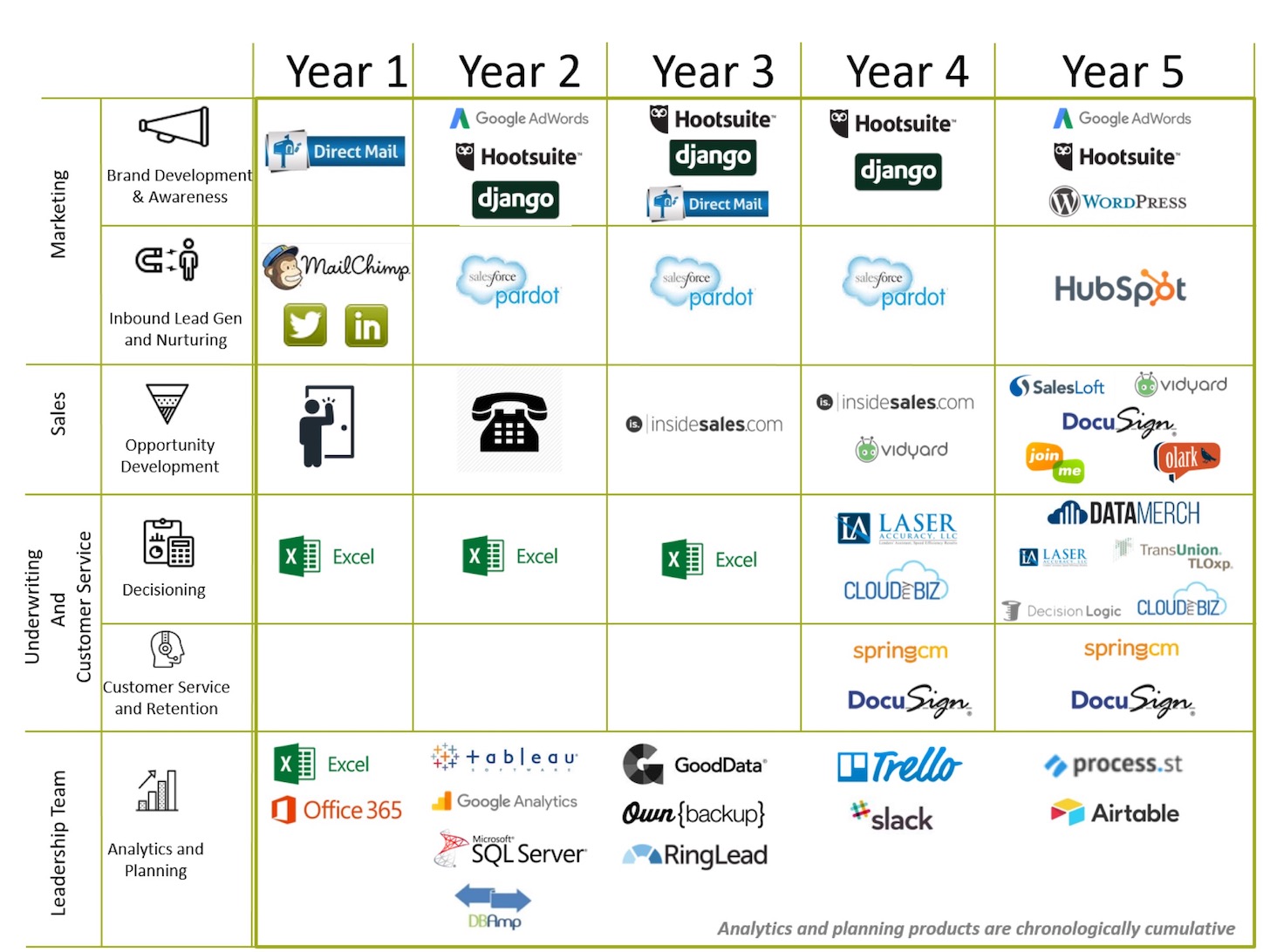
10. Linked Abilities Map
At the intersection of teams and resources, capabilities are made. Rather than searching at your stack by means of the lens of seller groups, you can organize a see all-around distinct capabilities, these types of as marketplaces, consumer-produced content material, material syndication, qualitative and quantitative analysis, and so on. Mapping these capabilities in clusters, to display their adjacencies and relationships with every other gives you a image of the ecosystem all-around your stack.
This 2021 Stackie entry from Philips is a terrific illustration:

Other Strategies to Map Your Stack
Of program, there are quite a few other methods to visualize other dimensions of your stack.
For instance, you may manage it close to aggregation technologies in just your martech stack. How are you horizontally aggregating info, workflow, practical experience, and governance throughout several distinctive applications, info sources, and shopper touchpoints? Which tools are you employing to vertically integrate those layers in just unique domains, these as CRM?
Alternatively, you might illustrate your stack to emphasize the diploma of customization in distinctive applications and platforms. They may possibly vary of purely out-of-the-box business apps, to packaged items that have been custom made or prolonged with your own code, to absolutely custom made applications that are unique to your business.
Just about every of these unique techniques can give you different insights into the character of your stack — and help you communicate them to stakeholders across your corporation.
What does your martech stack appear like?
Reminder: Even if you do not enter The Stackies you — while we definitely hope you do — don’t neglect to sign up for the cost-free webinar on #MartechDay, May well 3. We’ll be unveiling the new 2022 martech landscape, releasing a State of Martech report, and celebrating the entrants and winners of this year’s Stackie Awards.








